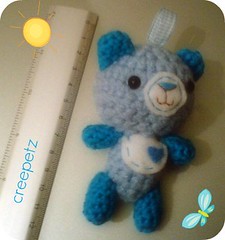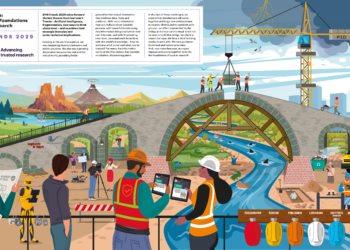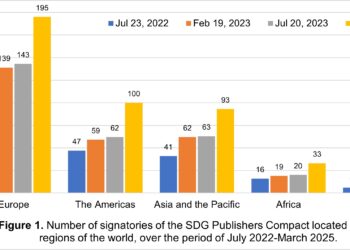
- Image by CREEPETZ via Flickr
Nicholas Carr has famously and devotedly worried that our ability to engage with and concentrate on long-form content is being impinged by the Internet’s short blasts of information — the Mama Bear’s “too cold” is being defeated by the Papa Bear’s “too hot,” to adopt a more infantile comparison. And the contrast between short-form and long-form content has led to a popular extrapolation — that our brains are changing in response to shortened attention spans, multi-tasking, and rapidly shifting information landscapes.
The Internet has certainly created a plethora of telegraphic communication approaches, from URL shorteners to Twitter to Facebook statuses to RSS feeds. However, Carr’s belief that the trade-off has been around long-form content may require some modification, at least if you choose to believe a thoughtful and persuasive essay by Clive Thompson in Wired:
. . . this endless fire hose of teensy utterances means we’ve lost our appetite for consuming—and creating—slower, reasoned contemplation. Right? I’m not so sure. In fact, I think something much more complex and interesting is happening: The torrent of short-form thinking is actually a catalyst for more long-form meditation.
Long-form content seems to be more available as academics and others have access to publishing tools, growing even longer as it persists and even gains ground, while short-form content is exploding in popularity.
What seems to be disappearing is moderate-length content — the “just right” Baby Bear of the content world. In other words, we’re losing the smartly written news digests like Newsweek and TIME, the thousand-word articles, the 10-minute summaries.
This trend seems to be seeping into scholarly communication as well, with the increasing use of bullet-point “take home” boxes in print and online journals, shorter versions of articles like BMJ’s Pico, the brief reviews at Faculty of 1000, and the overt utilization of acronyms in studies to increase their soundbite quality. Meanwhile, scientific and review articles are increasing in length online, with datasets, longer versions, and extra images, videos, and tables.
Baby Bear is being pulled apart.
New content forms tend to miss the middle, as well. New interactive features at some journals take longer to complete than a single, dense article, and many new video pieces tend to run for 15-30 minutes or longer, most likely longer than it takes to read a comparable article. Meanwhile, blurbs and excerpts dominate home pages, search results, and the like.
There are many factors driving this trend toward either long or short content:
- Devices are being built to miss the middle — iPhone for short bursts, iPad for long reading sessions
- Lifestyles are too extreme for high-end information consumers — they have a frantic pace followed by purposeful downtime
- Search engines reward short information strings and metadata and links, while there is nothing but upside for running long
- Usability studies of reading online have created more awareness of the user and uniform responses among providers than print probably ever did, and much of what we know indicates that tighter content presentation is better
- Media shifts have allowed writing to find a more natural length — we’re not writing to fill space between ads or to fill pages; we’re writing as much or as little as we need to, not writing to length
- New technologies (Twitter and Facebook, especially) have made brevity the soul of wit once more
I’ve noticed this same trend in my own life. I use the short-takes of Twitter and Facebook and online headlines to create awareness, catch the gestalt, or get a brief chuckle. But I’m simultaneously cultivating a set of long-form readings from other sources — books, long essays, thoughtful reviews, large reports, white papers. What’s missing is the middle.
Thompson notes the same thing happening even in blog posts:
This trend has already changed blogging. Ten years ago, my favorite bloggers wrote middle takes—a link with a couple of sentences of commentary—and they’d update a few times a day. Once Twitter arrived, they began blogging less often but with much longer, more-in-depth essays. . . . One survey found that the most popular blog posts today are the longest ones, 1,600 words on average.
Looking back at the early days of the Scholarly Kitchen, just a few years ago, most of the posts were medium length entries, a few paragraphs mostly, some extending to more than a handful. Now, our posts are longer by a fair measure. Meanwhile, our Twitter sidebars and the blog’s own Twitter feed provide the short-form outlets for our bloggers they crave.
Perhaps the Goldilocks definition of “just right” wasn’t important or accurate after all, but a consequence of print constraints. Now that those constraints are falling aside, we’re finding that either we can say things very briefly or want to explore things deeply.
Maybe it was only a matter of time before Baby Bear’s porridge wasn’t “just right” anymore. Or maybe that’s a dish we’ll start to crave again soon enough.
Discussion
9 Thoughts on "Diverging Content Preferences: Is Baby Bear's Disappearance Cause for Worry?"
I wonder what length you consider the “middle” to be? Your examples above suggest that you are talking contextually rather than absolutely, i.e., a medium-length blog would clearly be much shorter than a medium-length book. But there have been some notable successes with what one might consider medium-length publishing in a more absolute sense, e.g., the series of pocket books that Princeton has issued in which Harry Frankfurt’s famous “On Bullshit” appeared.
This topic may or may not be usefully related to “disintegration” of large blocks of content.
Many academic publishing houses now sell single chapters of ebooks. Amazon.com is now selling copy copies of academic journal articles at $9.95. Deepdyve “rents” single copies of academic journal articles (like Netflix) for prices as low as 99 cents each.
Does this sound related to you?
I think it is related. Midsized content was, I think, partly a side-effect of a certain information retailing situation — advertising space in newspapers, page layouts in magazines, and bookstores for books. Now that information retailing is more accommodating of various formats, those formats are emerging. Most importantly, now that immediacy and relevance are both independently and mutually valuable, short-form and long-form content are flourishing.
Also, as you note, the ability to sell both the major block of content and then short pieces of it leaves the middle ground out, as well. As a content provider, you want both long and short, but probably not as much in the middle, at least if you use this model.
Thank you for your medium length article which identifies an interesting example of an effect of technology: our declining interest in communicating through medium length articles!
On reading it, I understood your observations such as “What’s missing is the middle.” to imply that the contracting middle is unfortunate and to be resisted.
However, on reading your answers to others’ comments, I wonder whether you are more ambivalent about this change.
On the other hand, your suggestion that this is “a consequence of print constraints” now being relaxed goes further and makes a lot of sense. If this is so, are you implying that those constraints were eliminating or extending the short posts longer and squeezing or splitting the long posts shorter, resulting in an artificially plump middle.
On this basis, with the increasing variety of channels supporting a wider range of appropriate post lengths, perhaps the middle is slimming down because it is finding its more natural level, as available channels accommodate messages which suit longer and shorter posts.
If so, do you agree that this is no bad thing?
I was waiting for someone to note that I’d written a midsize article. Thanks.
I’m not sure this is such a bad thing at all, but I’m not sure it’s permanent either. I do think there is a bit of craft to generating a synthesized medium-length article that also aids in consumption, but it was probably an invention of a mass media age in which commercial constraints created as you nicely put it “an artificially plump middle.”
Many skeptics of Twitter scoffed that 140 characters were too few to say anything meaningful, yet we’ve all seen wonderful tweets with links, and with room to spare.
If constraints drive creativity, then on one side, we have the constraints of brevity and on the other the loss of the constraints on length. We are losing the constraints that created the medium-length article, but I can see people being attracted to midsize content again, and perhaps the wise publisher or editor will consciously pursue its creation once more.
Thanks for clarifying that. So the plump middle is also oscillating?!
I agree that constraints can be beneficial in driving creativity. But surely we’d prefer the constraints to be dictated by the requirements rather than by the available implementation options?
Coincidentally, earlier today, I read about a publication apparently designed with these factors in mind. Unfortunately the site is too smart for me to provide you a direct link, but hopefully you can find it by clicking “Selected Work”, then “A magazine based on time” starting here: http://www.plaid-creative.com/plaid2.html.
The interesting part is: “Each page is time coded to let the reader choose how much time they’d like to spend. The book can be read three ways: in a 60-second overview, a 10-minute summary, or a half hour immersion.”
In this case, it seems, the message is designed so that the reader can decide on its length.



